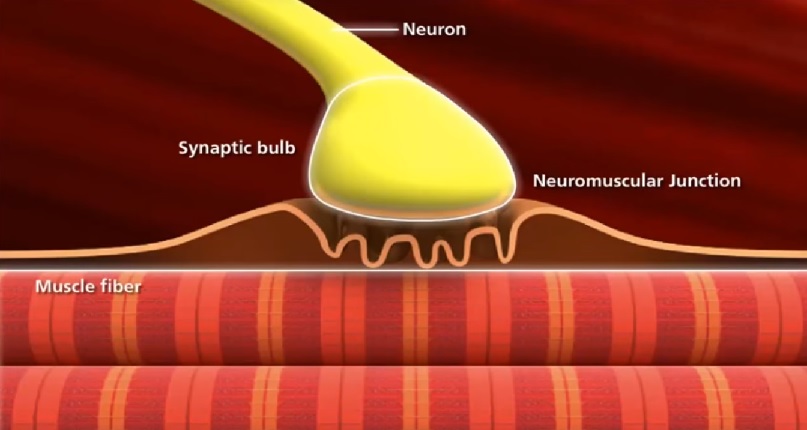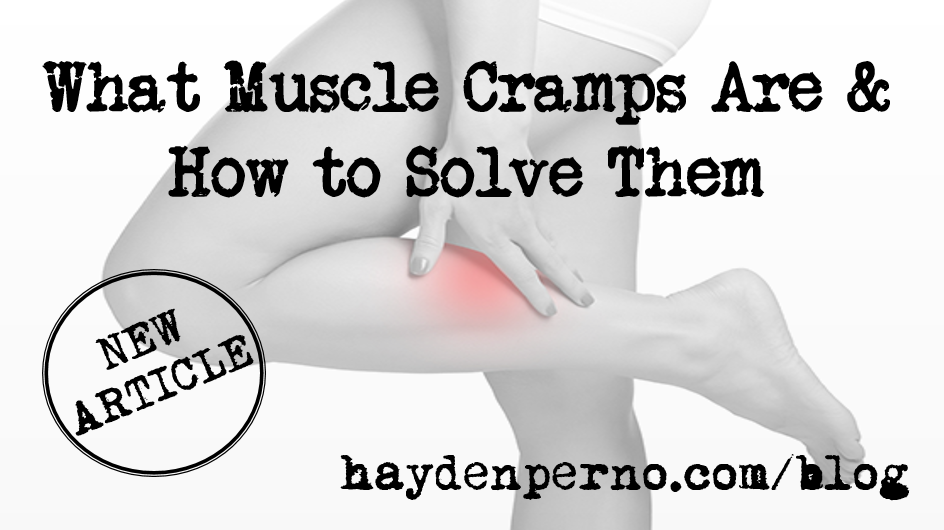I can see it now. You’re crushing reps in the gym. You’re running that extra mile. You’re lying in bed watching Netflix and go to roll over to check your phone and !BAM!, one of those ever-so pleasant muscle cramps hits you square in the face. (Well, not literally of course.)
You immediately cease everything you’re doing on account of your life flashing before your eyes, and grab the affected area, caressing it, nurturing it, and trying to make things right.
As the pain subsides and your breathing returns to normal, you count your blessings and return to doing whatever it is that you were doing, swearing that you will Google why you keep having these cramps and what you can do about them.
Well, here you go. The lowdown for cramps.
Let’s get started.
What is a muscle cramp?
In short, a muscle cramp is the result of your muscle contracting and not relaxing. For a muscle to contract, there is a specific chain of events that must occur. These include:
- The muscle must be stimulated via a signal from the nervous system that arrives at an area known as the neuromuscular junction.
- The signal must then jump the “gap” and hit the muscle fibre (also known as the sarcomere).
- As the signal arrives on the fibre, it will cause the release of calcium into the muscle cell, aiding in the binding of certain filaments known as actin and myosin.
- This binding will then go on to shorten the sarcomere and thus, leads to the muscle contracting (aka. shortening).

Following this contraction, For the muscle to then relax, the body must use ATP, everybody’s favourite energy source. This ATP goes on to essentially tell the myosin to let go of the actin, which actually halts calcium’s influx.
To give you a better idea of calciums power: When calcium is in abundance in the cell, a channel known as the sodium-potassium pump opens. When this happens, two potassium ions will move into the cell as three sodium will move out. As the cell gains the right amount of potassium, there will be less and less calcium contained within. At a certain point, once there is a lower concentration of calcium, this sodium-potassium channel will close.
It might seem a little complicated, but the point to pay attention to her when it comes to cramps is that if there is less potassium coming into the cell, then calcium cannot be inhibited. And if calcium cannot be inhibited, it will continue to tell the filaments to bind and causing contraction.
Most of the time, this contraction cramping scenario will occur when there is an overload of nerve impulses to the neuromuscular conjuction. As a result, the muscle will continuously fire. And when there is a continuous firing, waste tends to build-up. This is mostly due to a lack of oxygen but also an abundance of carbon dioxide.
As ATP requires oxygen to be synthesized, without it, it cannot be made. And as ATP is necessary to aid in myosins detachment from actin, it cannot be told to let go of actin and move on with its life.

Now, while the literature surrounding the reason for this scenario is somewhat incomplete and unclear and still being investigated, there are some standout possibilities. Here are three of them.
Possibility #1 – Dehydration
When it comes to exercise, or just living in a hot environment, sweating is no doubt a favourite pastime. Yet, when sweating occurs, water and sodium loss tend to come along for the ride.
What the science says when it comes to this phenomenon is that remaining fluids will move to what is known as the intravascular space. This will then cause an accumulation of metabolites such as potassium, sodium and lactate (aka. lactic acid).
This build-up plus a muscle contraction can then go on to cause a spontaneous discharge of peripheral nerves, leading to the muscle not being able to relax.
However, to counter this, it is recommended to ensure adequate water/electrolyte/carbohydrate consumption in and around the period of sweating. A good aim for this is to shoot for roughly 30-40 millilitres of water for every kilogram that you weigh, adding an extra 500-1000 millilitres for every hour that you perspire.
While the studies point to the fact that serious hypohydration doesn’t necessarily mean that you will cramp, especially in a non-fatigued muscle (below), adequate hydration does show that you can delay them.
Possibility #2 – Fatigue
When a muscle is doing something that it is not used to, it can lead to an overuse type of cramp. This is due to muscle fatigue causing an increase in excitatory signals and a decrease of inhibitory signals.
What this means is that when a muscle is being told to switch on for a long period of time, and it is not used to this type of demand, it can result in the signal increasing. Thus, the more fatigued you and your muscle is, the more possibility for the excitation signal to increase and for the inhibition to decrease.
To counter this, you can focus on not overdoing it and staying within an intelligent limit for what you are capable of. The harder and longer you train can result in muscle fatigue, so pay attention and be aware for what level you are at along your training journey.
Possibility #3 – Poor Tissue Quality
If muscle tissue is of poor quality, meaning it is damaged or not entirely recovered from certain exercise/events/etc., the muscle can be at a lower ability to intake required nutrients and eliminate waste products.
To counter this, we can employ some simple release techniques such as foam rolling or massage to ensure that tissue quality remains at an ideal level. This will then in turn provide the physiology of our body to intake just the right amount of calcium at the right time, and therefore synthesise ATP when it is needed.
As the common areas for muscle cramping tend to be the feet, the calves and the thighs, here are three very simple release techniques that you can practice to keep on top of your cramping – whether it be exercise induced or for those that suffer from cramps at night (also known as nocturnal cramping).
Related articles:
Why You Need Daily Servicing
Expectations vs. Reality
5 Ways to Detox
Dealin’ With DOMS


